2022 Volkswagen GTI Thrives in the Modern Era
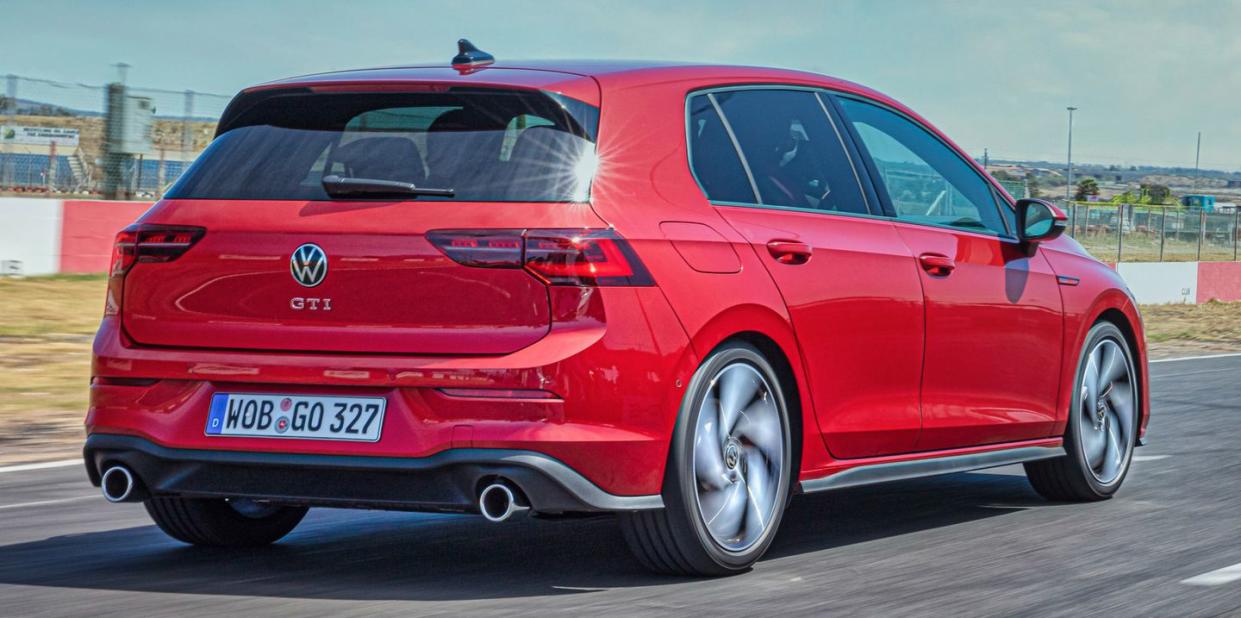
A de-chromed body, decorative red stripes, three letters on the front grille: The new Volkswagen GTI has the subtle touchstones that have characterized it since it began in the mid-1970s. What began as a secret project for the first-generation Golf made it to production and became an instant success. The original GTI defined its segment, and the upcoming eighth-generation GTI promises to keep GTI on top.
In the United States market, the front-wheel-drive GTI, fitted with a turbocharged 2.0-liter TSI inline-four with about 245 horsepower, will initially be the only way we'll get the latest Golf. After the GTI launches, it'll be joined by the all-wheel-drive Golf R, rated at around 330 horsepower. But, that's it. There won't be a regular Golf coming to the States, and, sadly, that means no Sportwagon or Alltrack.

Those U.S.-bound GTIs will come from Germany instead of Mexico. And a first drive in the GTI's home turf—country roads and autobahns near Wolfsburg—have us very excited.
The GTIs we drove were European-spec versions, but U.S.-bound models should be similarly powerful. The upgraded 2.0-liter turbo-four (EA888) serves up 245 horsepower from 5000 to 6500 rpm. Maximum torque is an impressive 273 pound-feet, delivered from 1600 to 4300 rpm. According to Volkswagen, that's enough power to hurl the GTI to 62 mph in 6.3 seconds. That number seems conservative to us considering the seventh generation with less power could hit 60 in less than six seconds. Top speed is governed at 155 mph. Fuel consumption is not yet rated, but we expect the GTI to match or best the current car's 24 mpg city and 32 mpg highway EPA numbers.
Regular C/D readers will appreciate the continued presence of a manual transmission. Gearing is such that 60 mph can be reached in second, and third gear is good for nearly 100 mph. The engine is supremely elastic, makes power everywhere, and runs through the entire rev range with a satisfying linearity.
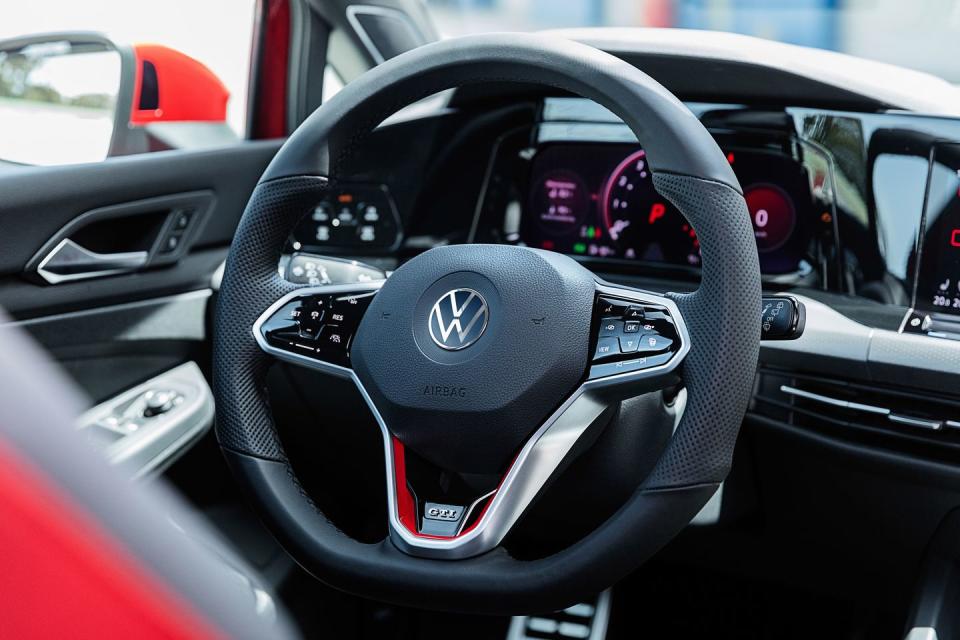
The manual gearbox could be better, though. The throws could be a bit shorter, and the brake pedal protrudes to an extent that makes it difficult to execute a heel-and-toe downshifts. The manual also keeps the kickdown switch under the accelerator pedal, which seems a bit silly in a manual. There's no auto rev-match system, which makes the pedal position even more regrettable.
The other gearbox is VW's familiar seven-speed dual-clutch automatic. It adds about 65 pounds, bringing the curb weight to about 3220 pounds, but we can't fault the seamless and instant shifts. The gearbox is controlled with a futuristic selector on the center console and two paddles on the steering wheel. Hold down the left paddle, and the gearbox will give you the lowest possible gear for your speed.
We think the GTI feels more agile and fun with the manual 'box, but the dual-clutch is excellent. The snaps and pops during shifts and when you abruptly lift have largely disappeared, but that may be due to Europe's mandatory particulate filter. U.S. models won't get the filter, which may make them sound a little more dramatic.
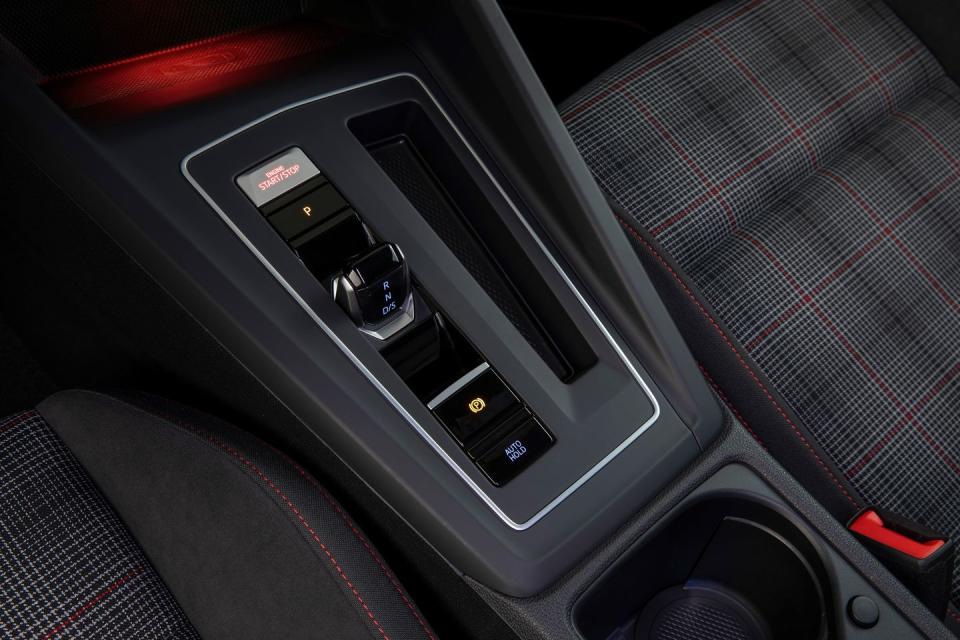
Chassis tuning and the embedded electronic control systems are superb. The steering is extremely precise and direct; the electronically controlled dampers can be adjusted through a large spread from comfortable to very hard. The electronically controlled VAQ front differential lock is vastly superior to just the stability-control-based XDS system, which remains on the car to complement the other dynamic systems. Steering and traction improve noticeably over the previous GTI, especially when fitted with 235/35R-19 tires, as on our test car.
Like the new Golf, the new GTI has an almost shockingly futuristic dashboard, configurable in many ways. It's perhaps a bit gimmicky, but it offers a wide array of display styles. The seat fabric is a reminder of early GTIs, and for those not into tartan, there's a leather option. The center console holds a charging module for smartphones and two cupholders. They work well in the automatic version, but in the manual version, any cups, bottles, or mugs will get in the way of the driver's elbow when shifting. Fortunately, you can toss your drinks into the holders in the door pockets.
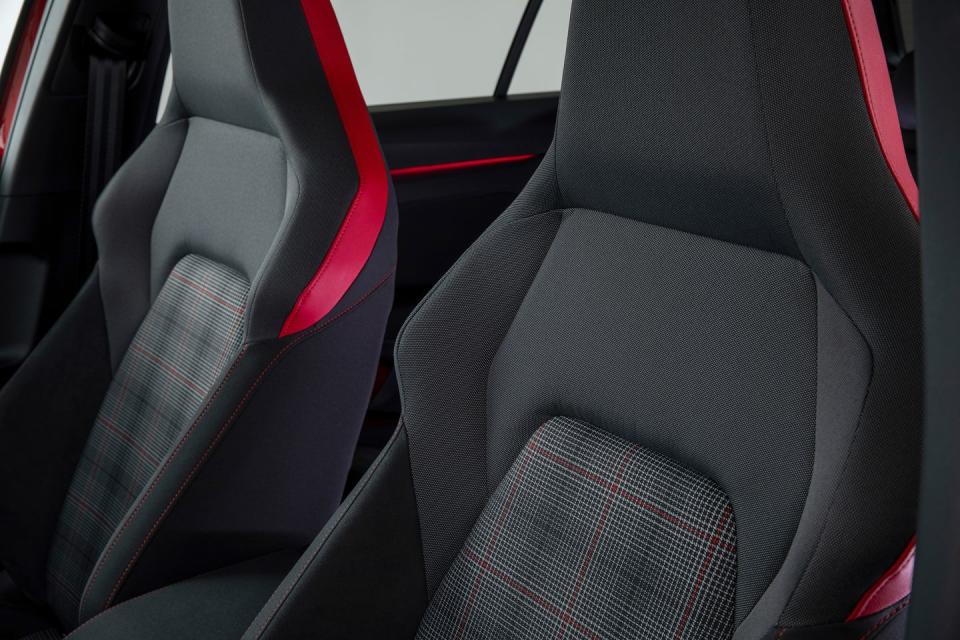
The GTI remains at the top of its class in terms of quality and materials, and it feels truly spacious inside despite its compact body. The sport seats offer plenty of lateral support, yet they are comfortable enough for long road trips.
While we generally approve of the digital user interface, we have one particular gripe: The adjustment of the stability control system is buried deep in the bowels of the complex menu structure, and it requires a staggering six pushing or swiping inputs to deactivate the system or to put it into Sport mode, which allows for greater yaw angles. On a sporty car like the GTI, this function deserves a button right in the driving-mode menu.
In Germany, the GTI will cost about 35,000 euros, including a 16 percent sales tax. When it launches in the U.S. in late 2021, prices are expected to remain close to the current model's $29,515. With its power boost and noticeably improved dynamics, we think the utterly modern GTI will remain at the top of the segment its ancestor founded.
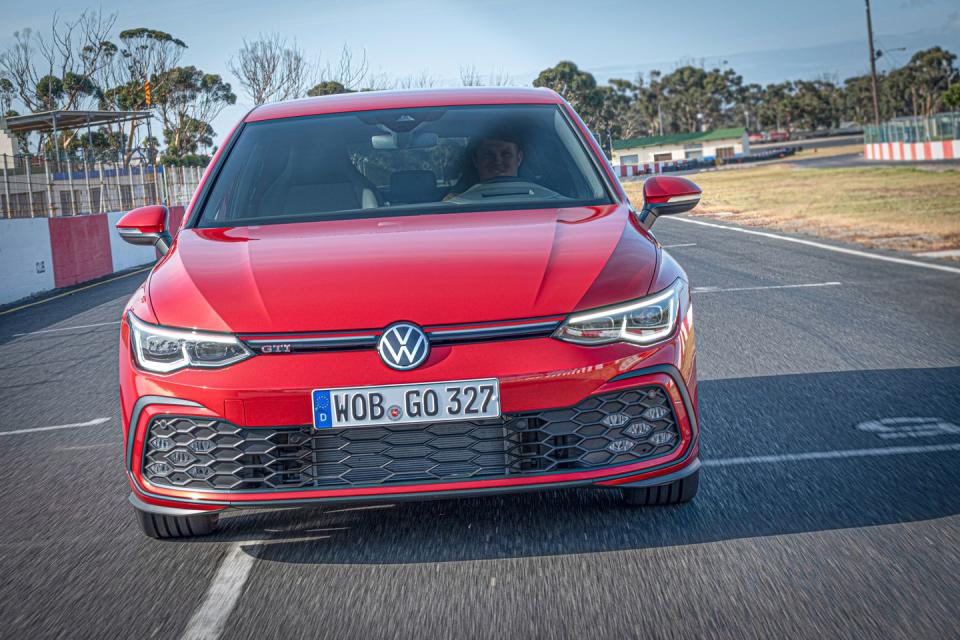
You Might Also Like

 Yahoo News
Yahoo News 
